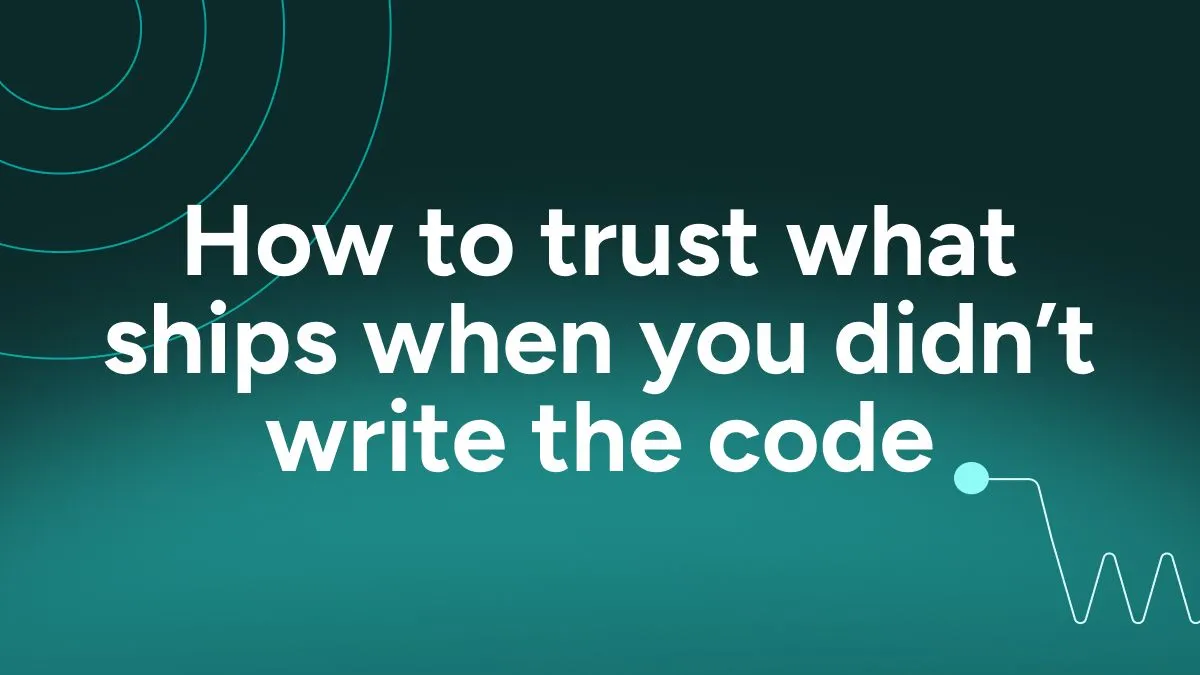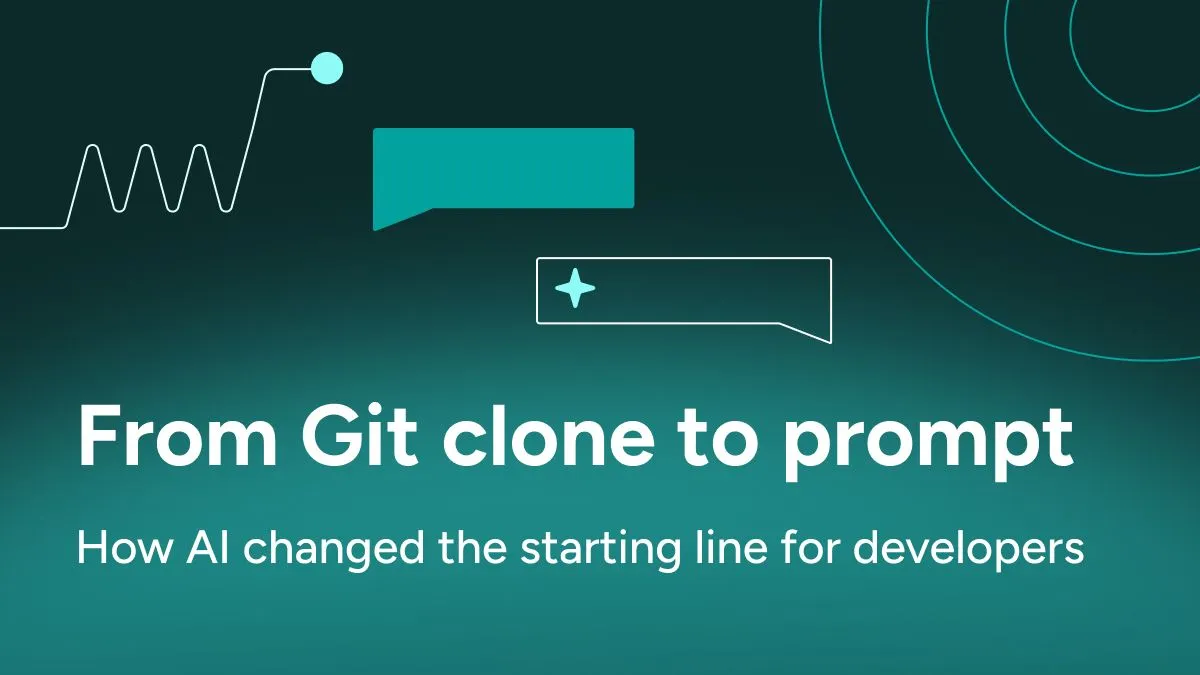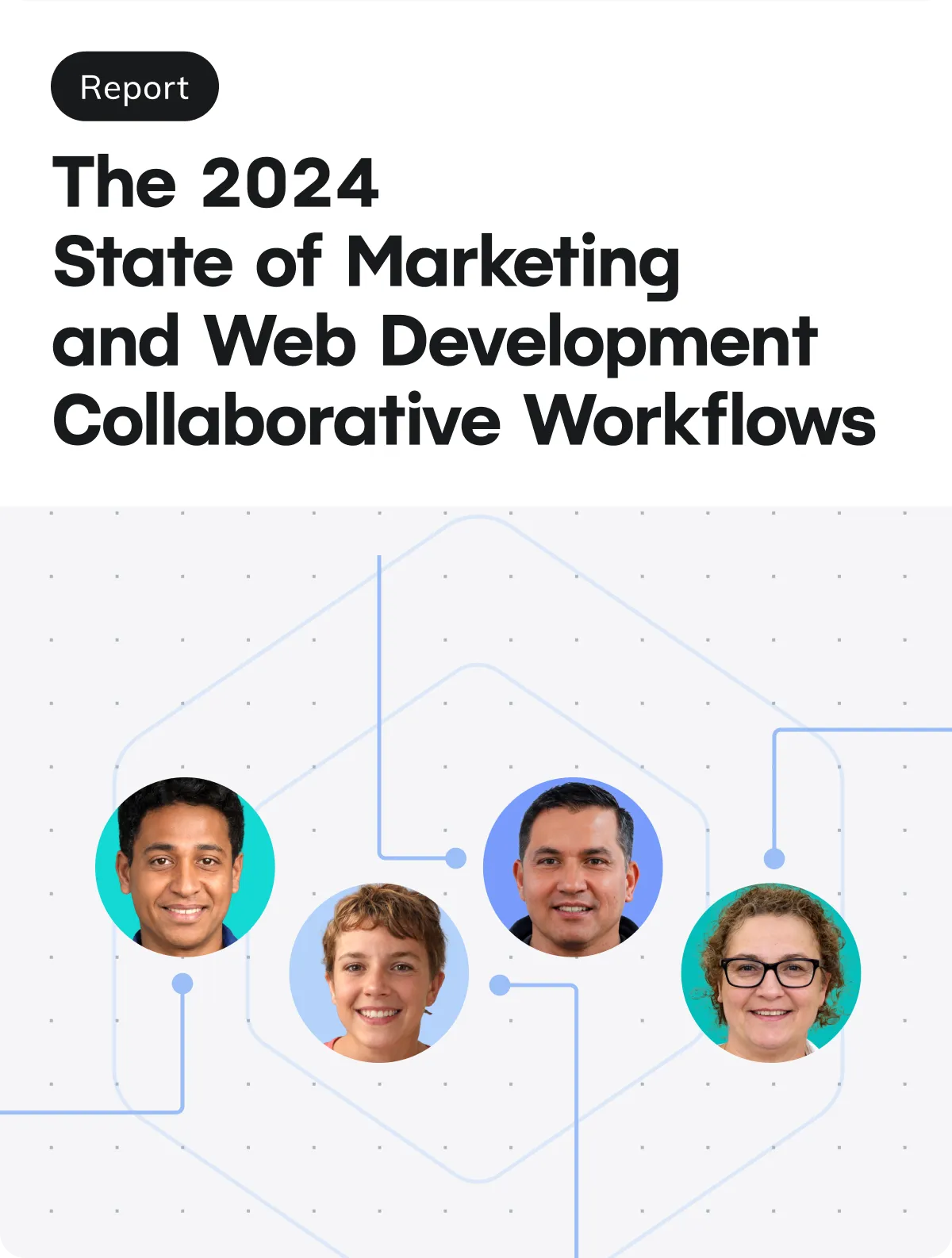Picture this:
You paste a prompt into an AI-agent. Thirty seconds later, you’re looking at a complete component–authentication flow, error handling, and tests included. The code looks good. Your linter is happy. The tests are passing. But are you sure you’re ready to ship?
In the back of your mind, there’s this nagging feeling.
What if the AI missed something? What if there’s a subtle vulnerability in the authentication logic—something that wouldn’t show up in unit tests but could expose user sessions in production? What if the implementation works perfectly today but becomes a maintenance nightmare when we need to extend it?
This is the central tension in the AI-assisted development era: speed without certainty. The code materializes in a blink but trust doesn’t arrive at the same pace, if it’s even established at all.
The question isn’t whether to use AI. It’s whether your infrastructure can keep up and help close the confidence gap. Because when you compress build cycles, you don’t just ship faster—you ship differently.
When velocity turns into volatility
Yes. AI has accelerated build velocity in a way few could ever have imagined. You’re not just shipping code anymore. You’re shipping decisions made by a model that doesn’t understand the business context or the technical debt in your existing codebase.
Speed magnifies both progress and mistakes. Consider what happens when a small regression slips through: the feature works in isolation, tests pass, code review looks clean. But three components downstream, something breaks. By the time anyone notices, you’ve shipped two more changes on top of it. Now you’re debugging a cascade.
Without the right systems in place, faster cycles amplify other risks too:
- Performance dips sneak past code review.
- Features collide, leaving downstream teams scrambling.
The cost of hesitation
Developers hesitate when they can’t see the blast radius of a change. They hesitate when rollback means a manual scramble instead of a single click. They hesitate because nobody wants to be the one who took down checkout on Friday afternoon.
None of this makes the code safer. It just slows the entire process down. You’ve now traded AI velocity for human friction.
That hesitation comes at a cost. Every delayed deployment slows feedback, delays customer value, and kills momentum. With that lost time comes lost opportunities: features that never launch, experiments that never run, and market share that slips to teams who keep moving.
Speed means nothing if your team is afraid to deploy. The real drag on velocity isn’t process. It’s uncertainty, and the opportunity cost that comes with it.
Building the safety net for speed
If AI makes acceleration inevitable, infrastructure becomes the differentiator. The teams that ship fast without breaking things have something in common: guardrails that make speed sustainable.
Three layers matter:
1. Previews
See the change before you commit to it. Not a code diff—a live environment where you can click through the actual feature and validate its function. This closes the gap between “I think this works” and “I know it works.”
2. Audit trails
When changes ship in minutes, transparency matters. Clear records of what shipped, when, and by whom aren’t compliance theater—they’re how teams maintain shared confidence.
3. Rollbacks
Recovery speed determines risk tolerance. If rollback takes hours, teams will hesitate. If it takes seconds, teams move more boldly.
Here’s what this looks like in practice:
Your AI agent generates a new authentication flow. The platform spins up an isolated preview with a live URL. Your team reviews the actual working feature—not just the diff—before merging. If something breaks in production, you rollback with a single click.
This is how you make AI velocity sustainable.
Why performance metrics miss the point
Most platforms compete in milliseconds. Faster builds. Lower latency. Optimized throughput. These numbers look good in benchmarks, but they don’t solve the problem that’s actually slowing teams down.
The bottleneck isn’t how fast your code runs. It’s how fast you can develop confidence that your code works.
A sub-second build means nothing if you’re still afraid to merge. Edge latency doesn’t matter if you can’t tell whether a change will break production. Raw performance is table stakes. The overlooked differentiator in the AI era is confidence at every release—the infrastructure that lets you ship fast and sleep at night.
That’s what Netlify is built for: speed with certainty.
Speed without fear
Remember that feeling? Staring at a wall of AI-generated code–tests passing yet wondering if you’re about to break production?
Netlify is built for this moment. Previews for every change. Audit trails for tools like Agent Runners that track what shipped. One-click rollbacks.
The fastest teams aren’t reckless. They’re confident because they have trusted guardrails in place. That’s the sustainable model for AI-accelerated development: velocity backed by visibility. This is how you build fast, without fear.




